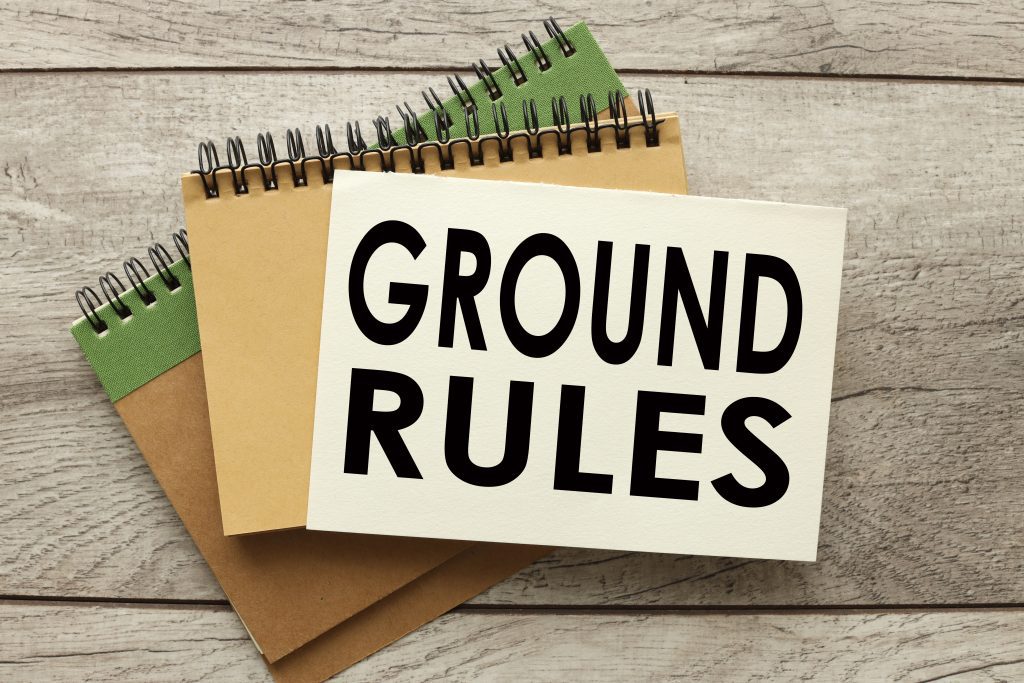Looking for Expert-Level VA Claim Answers?📱Call Us Now! 737-295-2226
Today, we’ll deep-dive the important elements of the 5 10 20 Year Rule VA Disability, and explain these 3 critical VA rules (with examples).
What’s the bottom line?
The VA always retains the right to conduct a reexamination to determine if your disability has improved, worsened, or stayed the same.
However, certain ratings are “protected” based on the VA 5 10 20 Year Rule, and are not subject to reevaluations or VA rating reductions.
Note: Any VA disability rating can be eliminated or reduced if the VA determines the original rating was based on fraud.
- What is the 5 10 20 Year Rule VA Disability?
- What is the VA Disability 5 Year Rule?
- What is the VA Disability 10 Year Rule?
- What is the 20 Year Rule for VA Disability?
- What are the Protected VA Ratings Not Subject to Re-Examination?
- Why Does the VA Reevaluate VA Ratings?
- When Will the Potentially Reevaluate My Disability Rating?
- How Will the VA Notify Me of a Reevaluation?
- What Should I Do If I Get a Proposed VA Rating Reduction?
- About the Author
What is the 5 10 20 Year Rule VA Disability?

Here are 3 critical VA rating rules every veteran should know:
- VA Disability 5 Year Rule: The VA 5 year rule allows the VA to reevaluate your existing VA disability rating within 5 years of your initial examination, but only if your disability condition is expected to show “material improvement” over time.
- VA Disability 10 Year Rule: The VA 10 year rule states the VA can’t eliminate a rating that’s been in place for 10 years or more. Important: Your VA rating can still be reduced (not eliminated) if medical evidence shows that your disability has improved.
- VA Disability 20 Year Rule: The VA 20 year rule means if your rating has been in effect for 20 years or more, the VA can’t reduce it below the lowest rating it has held for the previous 20 years.
What is the VA Disability 5 Year Rule?
The VA disability 5 year rule allows the VA to reevaluate your existing VA disability rating within 5 years of your initial examination, if and only if, your disability condition is expected to show material improvement over time.
However, the VA may still reevaluate your VA rating past the 5 year deadline if your condition has significantly improved, as shown by medical evidence.
Important: There are 2 key exceptions to the VA disability 5 year rule:
- Permanent and Total VA Ratings: Veterans who have been granted a Permanent and Total (P&T) Rating are exempt from the VA 5 year rule. The P&T rating signifies that the service-connected disability is unlikely to improve in the future.
- Disability Conditions Not Expected to Improve: Veterans with service-connected disabilities that are deemed permanent and not expected to improve are also exempt from the 5 year rule. These conditions are typically characterized by their permanent nature, such as the loss of a limb or a chronic, progressive illness.
Example: You have had service connected GERD for the past 3 years rated at 30%. The condition is not “static.” According to the VA 5 year rule, the VA may schedule a Routine Future Examination (RFE), which is a C&P exam to assess whether your GERD has improved, worsened, or remained the same.
What is the VA Disability 10 Year Rule?
The VA 10 year rule means the VA can’t eliminate a rating that’s been in place for 10 years or more.
Note: The rating can be reduced if medical evidence shows that the disability has improved.
Important: There are 3 important exceptions to the VA disability 10 year rule:
- Fraud: The original rating can be eliminated after 10 years if the VA determines that the original disability rating was based on fraud.
- Permanent and Total VA Ratings: Veterans who have been granted a Permanent and Total (P&T) Rating are exempt from the VA disability 10 year rule. The P&T rating signifies that the service-connected disability won’t improve and can’t be eliminated.
- Disability Conditions Not Expected to Improve: Veterans with service-connected disabilities that are deemed permanent and not expected to improve are also exempt from the 10 year rule. These conditions are typically characterized by their permanent nature, such as the loss of a limb or a chronic, progressive illness.
Example: You have had service connected PTSD for the past 11 years and it’s currently rated at 70%. The condition is not “static.” Medical evidence shows your PTSD has shown material improvement over time, and your current occupational and social impairment and mental health symptoms more closely approximate the 50% rating level. According to the VA disability 10 year rule, the VA can reduce your current service connected PTSD from 70% to 50% because medical evidence shows material improvement over time, even though it’s past the 10 year mark.
What is the 20 Year Rule for VA Disability?
The VA 20 year rule states that if your current VA rating has been in effect for 20 years or more, the VA can’t reduce it below the lowest rating it has held for the previous 20 years.
Important: There are 3 important exceptions to the VA 20 year rule:
- Fraud: The original rating can be eliminated after 20 years if the VA determines that your original disability rating was based on fraud.
- Permanent and Total VA Ratings: Veterans who have been granted a Permanent and Total (P&T) Rating are exempt from the VA disability 20 year rule. P&T status signifies that the service-connected disability won’t improve and can’t be eliminated or reduced below its lowest rating level over the previous 20 year period.
- Disability Conditions Not Expected to Improve: Veterans with service-connected disabilities that are deemed permanent and not expected to improve are also exempt from the 10 year rule. These conditions are typically characterized by their permanent nature, such as the loss of a limb or a chronic, progressive illness.
Example: You have had service connected Migraine Headaches for the past 22 years and it’s currently rated at 50%. 12 years ago; however, your Migraine Headaches were rated at 30%. According to the VA disability 20 year rule, even if your Migraine Headaches show significant improvement, the VA can’t reduce the rating below 30%, which is the lowest rating held over the previous 20 year period. Note: If your disability is deemed “static” at 50%, it is highly unlikely the VA will reevaluate you and lower the rating unless it was previously based on fraud.
What are the Protected VA Ratings Not Subject to Re-Examination?
There are 7 types of protected VA disability ratings not subject to a re-evaluation:
- The disability is “Static,” without material improvement for 5 years or more (a static disability is a “permanent” disability by its nature, history, and severity. A static VA disability is deemed permanent and not subject to routine future examinations to determine whether the disability has improved).
- The disability is “Permanent” and there is no likelihood of improvement (the impairment is reasonably certain to continue throughout the life of the disabled veteran).
- The disability has been in place for 10 years or more. Note: Your VA rating can still be reduced (not eliminated) if medical evidence shows that the disability has improved.
- The disability has been continuously in effect for 20 years or more.
- The veteran is over 55 years of age (except under unusual circumstances or where required by regulation).
- The veteran has a 100% VA rating that’s deemed a “total” disability. *Note: The VA can only reduce the rating if the medical evidence demonstrates “material improvement.”
- The disability is rated at the prescribed schedular minimum within its Diagnostic Code (DC)
- The disability is rated at 10% or less, or
- The combined evaluation would not change even if the VA re-evaluation resulted in a reduced evaluation for one or more disabilities.
Why Does the VA Reevaluate VA Ratings?
The VA conducts re-examinations of VA disability ratings primarily because not all service-connected disabilities are considered permanent.
As a result, the VA has the authority to review the cases of veterans whose conditions are anticipated to improve over time.
However, veterans who are protected by a Permanent and Total Rating or those with conditions deemed to be unchangeable are exempt from the 10 year rule.
For instance, a veteran with a permanent service-connected disability, such as a missing arm, or a PTSD rating that’s been in-place for 10 years or more, fall into this category.
When Will the Potentially Reevaluate My Disability Rating?
If you have a disability condition that’s expected to improve over time, such as a mental health condition that’s had a rating for less than 5 years, the VA can re-evaluate your disability condition within 2 to 5 years of your initial examination.
Keep in mind VA re-evaluations aren’t necessarily a bad thing.
For example, the VA is trying to determine if your disability rating should be increased, decreased, or kept the same based upon your Frequency, Severity, and Duration of symptoms.
The VA may also reexamine your VA disability rating if there’s obvious evidence that your condition has improved or even disappeared.
If your VA rating has been continuously in-place for 10 years or more, the VA can’t eliminate the rating; however, it can still be reduced if medical evidence shows your disability has improved.
How Will the VA Notify Me of a Reevaluation?
The VA initiates a re-examination by scheduling a C&P exam to assess the extent to which your service-connected disability impacts your work, life, and social functioning, to include the severity of your symptoms.
It is crucial that you attend this appointment or reschedule it for a more suitable time.
Failure to do so may provide grounds for the VA to reduce or terminate your VA disability benefits.
Receiving a re-examination notice from the VA does not automatically mean that you should panic about losing your VA disability benefits.
If your condition has remained unchanged, it is highly likely that the VA will confirm the accuracy of your current VA disability rating and not eliminate or reduce it.
What Should I Do If I Get a Proposed VA Rating Reduction?
If the VA proposes to reduce an existing VA disability rating, you have 60 calendar days to respond.
If you disagree with the proposed reduction, you must provide the VA with medical evidence showing that the disability has not improved.
Have your treating physician write a letter on your behalf, upload specific sections of medical evidence that shows your condition has not improved, or upload any other medical reports or evidence to prove your disability has not gotten better.
About the Author

Brian Reese
Brian Reese is a world-renowned VA disability benefits expert and the #1 bestselling author of VA Claim Secrets and You Deserve It. Motivated by his own frustration with the VA claim process, Brian founded VA Claims Insider to help disabled veterans secure their VA disability compensation faster, regardless of their past struggles with the VA. Since 2013, he has positively impacted the lives of over 10 million military, veterans, and their families.
A former active-duty Air Force officer, Brian has extensive experience leading diverse teams in challenging international environments, including a combat tour in Afghanistan in 2011 supporting Operation ENDURING FREEDOM.
Brian is a Distinguished Graduate of Management from the United States Air Force Academy and earned his MBA from Oklahoma State University’s Spears School of Business, where he was a National Honor Scholar, ranking in the top 1% of his class.




